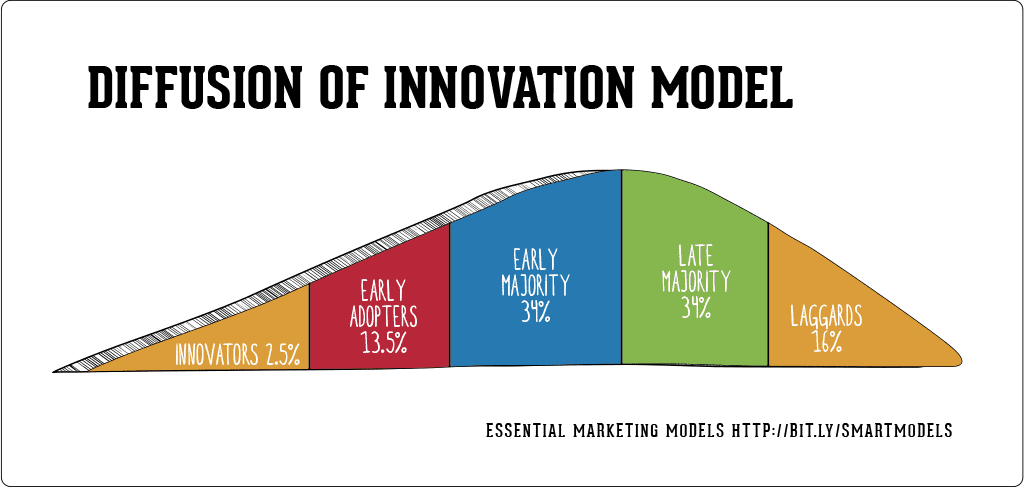Diffusion (9)

The Diffusion of Innovations theory describes the pattern and speed of new innovations and how they are adopted into society. There are five stages in which this theory occurs. First is the innovators of course, these are the people who create the product being introduced into society. These are the business owners or CEOs most of the time and interestingly enough much of the public does not really know who created the apps and technologies used in their everyday life. Next are the early adopters, these are the people who find interest in the new technology/product being released. Early adopters often participate in the beta stages of the product or become early investors as well, this group of people is very important to the success of a new product. Next is the early majority, these people are the bigger investors as opposed to the early adopters. The early majority are early enough to see the potential in a product and early enough to get in before it is too late. This stage is very important as well because it gives the product/technology more backing going into society. After this is the late majority, these people are somewhat late to the game. Once the product has been out and it has gotten a positive and popular response, the late majority hops onto the train. Finally the laggards, most of the time these people are still using prior technology or products instead of the new one. The laggards are ones who do not adopt the new product into society as well as the other groups. However, at some point in time, there is a high likelihood that this group of people will eventually accept and consume the new product in society.
An awesome recent example of this theory is the app, tik tok. I am sure everyone reading this has heard of tik tok. It has become one of the most used apps in the world at the moment. Currently, there are 1 billion users on the app, and that number only continues to get larger and larger. Obviously, tik tok did not just start out as one of the biggest apps on the planet. It was created in 2016 by Zhang Yiming of China but it did not gain a ton of traction right away. In 2016 many social media apps were becoming very successful with the likes of Instagram, Snapchat, and Facebook. Tik Tok was just coming onto the scene which was difficult with these successful social media apps already existing, however, it followed the diffusion of innovations model pretty well, and as we all know it is one of the biggest apps today. For example, the innovators obviously being Zhang Yiming as previously stated. Next are the early adopters, these are the social media influencers who saw potential in the app and they were the early users on the app. The early majority were the investors and companies reaching out to collaborate with tik tok. Then comes the late majority. This occurred in 2018 when the app really started to blow up. In such a short time span between the early majority and the late majority, this app took off. Tik Tok started crushing other apps in a quick fashion gaining an incredible amount of new users every single day. Finally the laggards, the people who still used other social media apps but did not download tik tok while the hype was going around. Having said that the laggards in this situation have been slowly dwindling because more and more users are using this app. Tik Tok has almost caught up to Instagram for the number of users. This is shocking because Instagram has been out for much longer than tik tok has. In essence, the Diffusion of Innovations theory is illustrated well in almost every new product and technology that is coming out in this modern age, especially with the amount society uses technology today.
https://www.businessofapps.com/data/tik-tok-statistics/
https://brandastic.com/blog/what-is-tiktok-and-why-is-it-so-popular/
Comments
Post a Comment